01:29
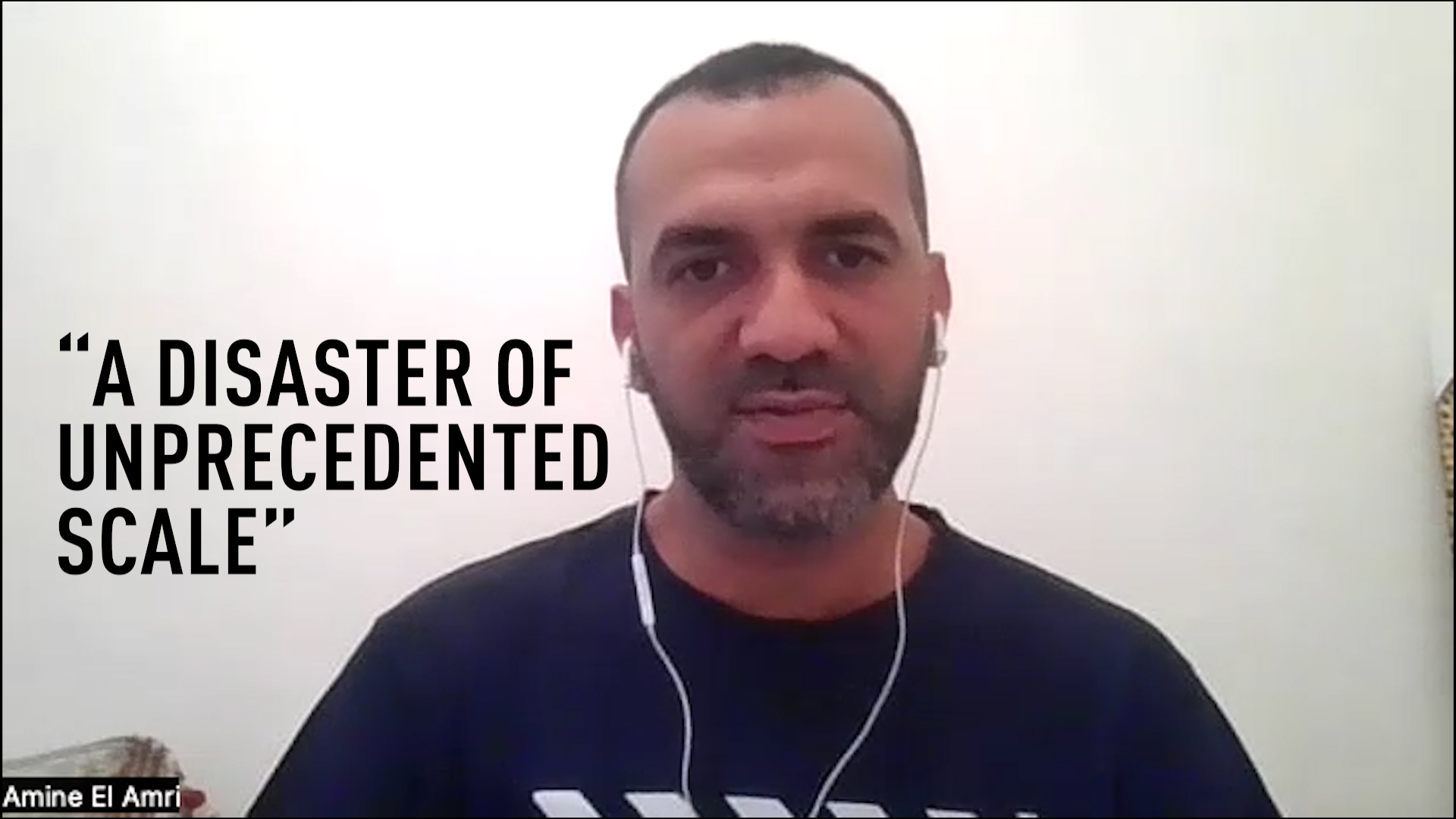
Earthquake rescue efforts are continuing in Morocco following an "unprecedented disaster" that has killed more than 2,100 people, flattening entire villages and city neighborhoods.
But as the death toll rises following Friday's 6.8 degree quake, Amine El Amri, a journalist for the Moroccan newspaper Le Matin, describes a nightmare situation that is getting more tragic by the hour - with much of the nation's trauma yet to sink in.
"There are whole villages that have just been wiped out of existence," he tells CGTN Europe. "People are talking about entire school rooms, entire classes, all of the students of a school with their professors, everything just wiped out."
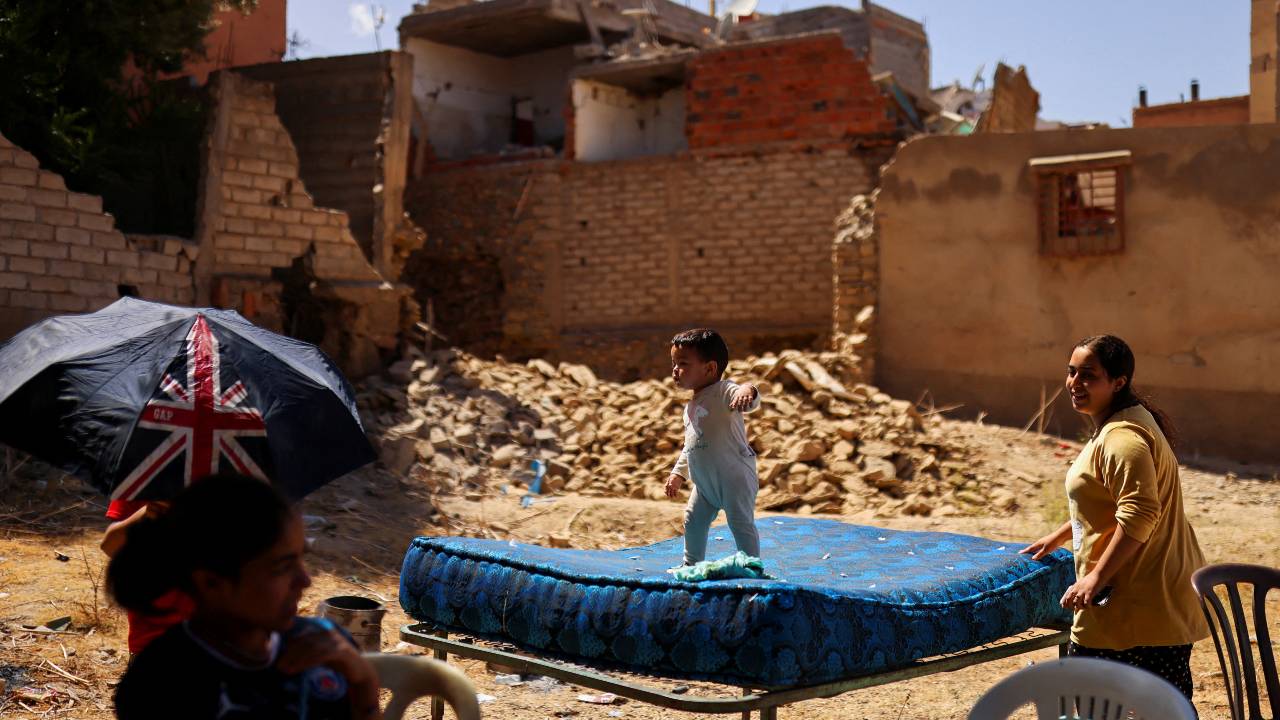
Hiba looks on as her daughter Sei eddine, two years old, plays on the mattress, in the aftermath of a deadly earthquake in Amizmiz. /Nacho Doce/Reuters
Hiba looks on as her daughter Sei eddine, two years old, plays on the mattress, in the aftermath of a deadly earthquake in Amizmiz. /Nacho Doce/Reuters
While the earthquake's epicenter was in the Ighil area, a mountainous rural commune, its shockwaves reached the nearest major city, Marrakesh. Many of the ancient settlement's buildings have been badly damaged, especially in its old Medina, a UNESCO World Heritage site where some of the city's most important landmarks date back more than 800 years.
"I've seen footage of entire neighborhoods under rubble," says El Amri, who is based in Casablanca. "For the houses still remaining, there is a huge amount of stress around them and the walls are not really strong right now. It's an old Medina so the risk is very real there."
Indeed, many Marrakesh residents have been forced to spend several nights sleeping on the streets, too afraid to return to their homes.
"We're not in a region where the tectonic plates are moving. There's no huge volcanic activity. There's no huge seismic activity. So when an earthquake strikes, it's something really new," he says. "Last time there was a significant earthquake was 14 years ago, so people don't have the survival reflexes that they might have in some of these situations."
Remote rescue mission
Up in the High Atlas, a mountain range where settlements are often difficult to reach, the devastation has been even worse. The remoteness of many of the worst-affected villages has made the rescue effort even more complicated, says El Amri. "On top of the mountains, it's usually hard to get there. It's even harder now with roads blocked."
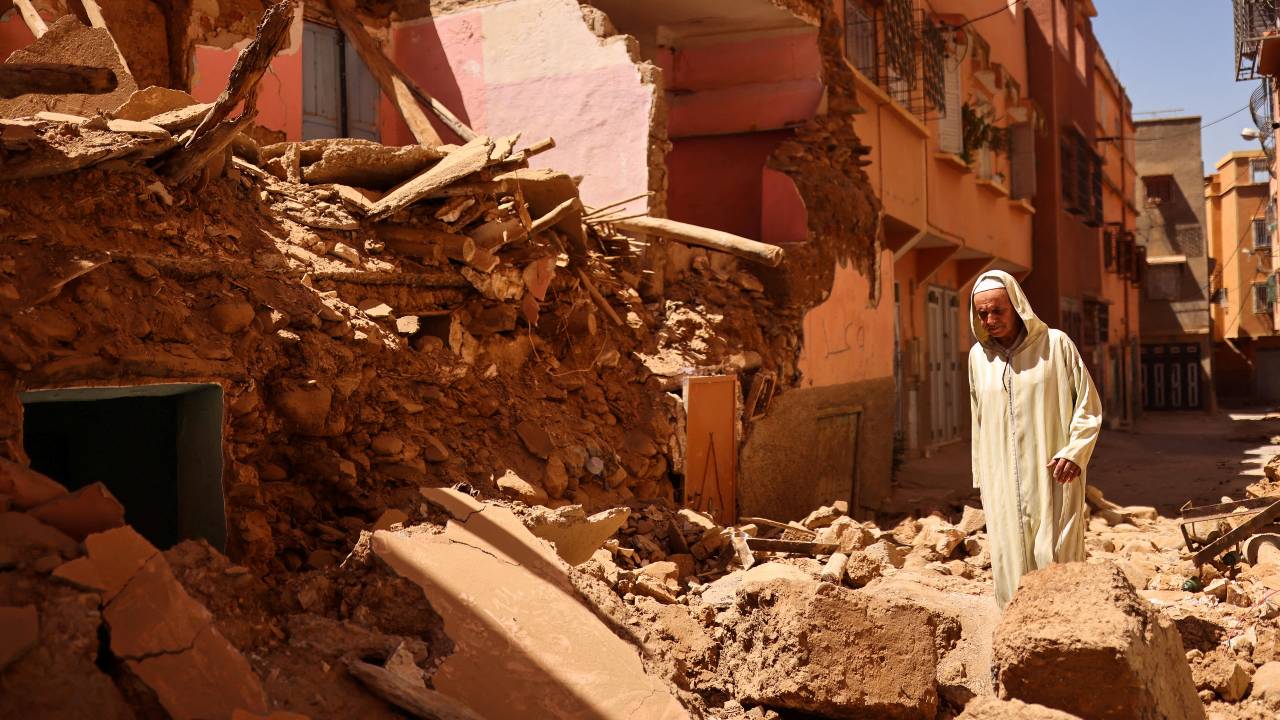
Mohamed Sebbagh, 66, stands in front of his destroyed house in the aftermath of a deadly earthquake. /Nacho Doce/Reuters
Mohamed Sebbagh, 66, stands in front of his destroyed house in the aftermath of a deadly earthquake. /Nacho Doce/Reuters
To give an idea of just how difficult, he explains that when primary school teachers are sent to the such villages, they first have to take a bus to one of Morocco's larger cities like Casablanca or Marrakesh; from there they then must take a taxi to the nearest big village; afterwards the only way to reach their final destination is traveling on the back of a mule.
"That's everyday life for these people," he says. "Imagine now with a seven-degree magnitude earthquake striking, how those little but vital roads that have been constructed over the years have just been wiped out."
With access routes cut off, the Moroccan army has been using drones and helicopters in a bid to reach people. But due to the large number of villages, it has been almost impossible to get to everyone in time.
The top priority remains finding survivors under the rubble, a duty that becomes more difficult as time passes, says the journalist. However, the other vital but tragic task is to remove the bodies of those killed by the quake that are still trapped beneath the debris.
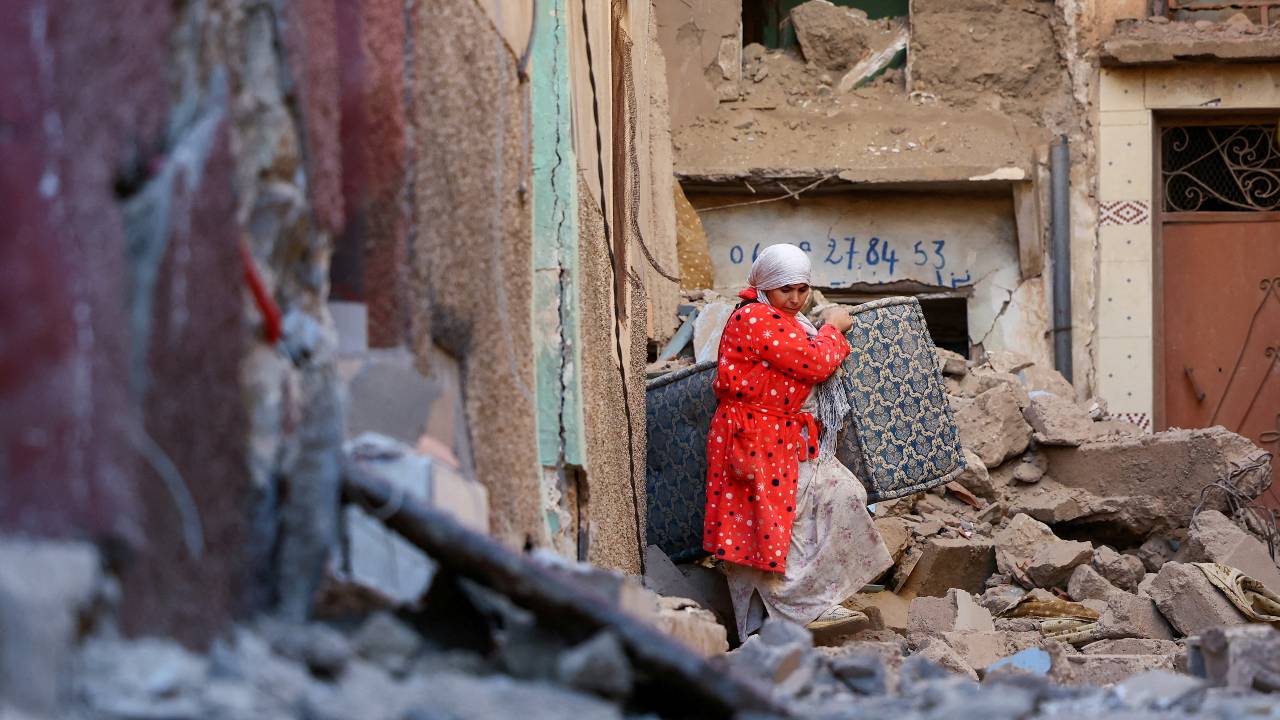
A woman carries belongings out of a damaged building in the aftermath of the deadly quake in Moulay Brahim. /Hannah McKay/Reuters
A woman carries belongings out of a damaged building in the aftermath of the deadly quake in Moulay Brahim. /Hannah McKay/Reuters
He explains that if the bodies are left there, they will start to rot, creating the risk of cholera and other diseases that can thrive in such conditions.
"If you hear a scream, if you hear anything moving in the rubble, you have to go in and try to dig the people out. But the second priority is to also get the dead bodies out from there because of the sanitary risk. It's very dark."
Humanitarian response
Then comes the challenge of providing assistance to more than 15,000 displaced people, many of whose homes have been completely destroyed.
"What I've seen in the last 36 hours is that people are trying to organize," says the journalist. "Above all, the priority is to help those people in those areas because they're devastated. They were poor before and now they're even poorer. And the only thing that they've got is the solidarity of other Moroccans."
Domestically, there has been a massive response from Moroccans who are trying to help their fellow citizens. While the worst-affected areas may be difficult to get to, El Amri explains that many locals holiday in the area, so they know the terrain, making it easier to organize the delivery of emergency supplies like food and drugs to the region.
And while Morocco initially delayed asking for foreign aid, other countries such as Spain, France, the U.S., even neighboring Algeria, which broke off ties with Morocco two years ago, have now offered help.
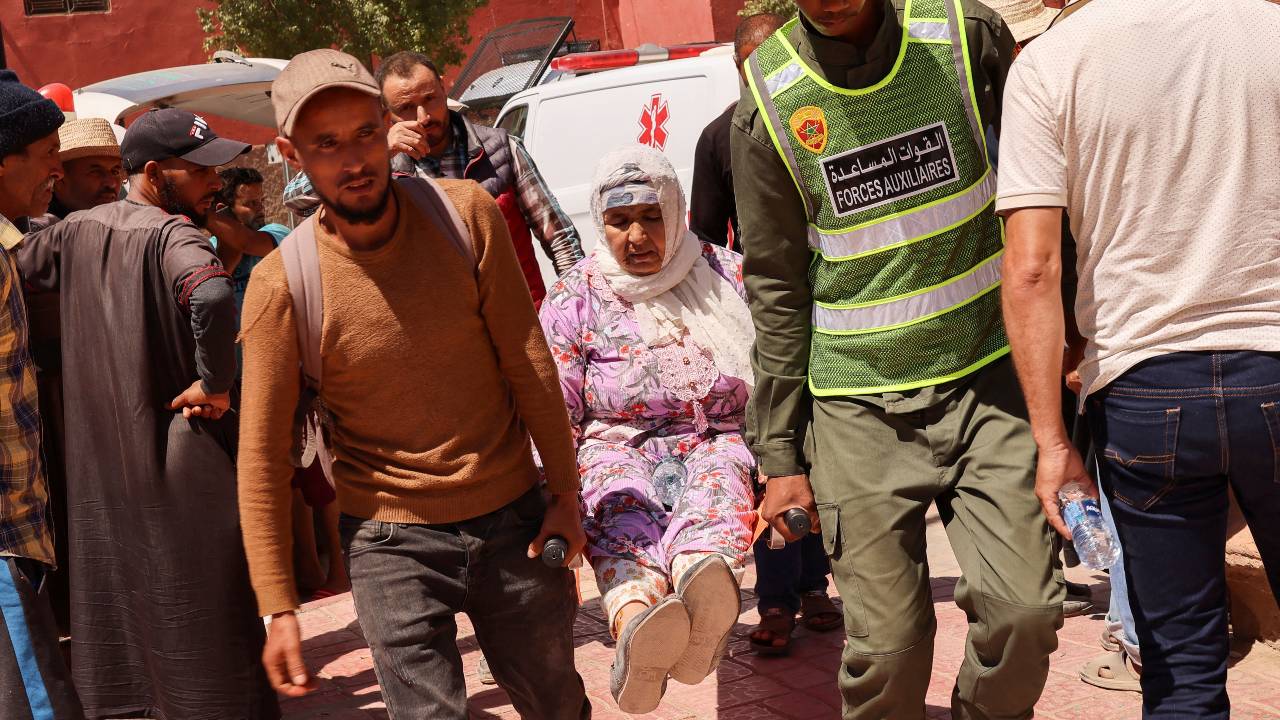
A woman who was rescue is carried away on a stretcher in Amizmiz. /Nacho Doce/Reuters
A woman who was rescue is carried away on a stretcher in Amizmiz. /Nacho Doce/Reuters
"People from richer cities like Casablanca, Rabat, and Fez are trying try to provide whatever they can," he says. People around the country have apparently also been lining up at local blood banks to donate to the victims.
"This is really heartwarming. I think that really shows how Moroccans live amongst themselves. There's huge solidarity… Everybody that can help is willing to do so."
One of the few positive aspects is that because of the mild September weather, it has been possible for people to shelter outdoors without having to face dire weather conditions like those experienced by the survivors of February's massive earthquake in Turkey and Syria.
The long road ahead
But even now, the danger is not over. There have been aftershocks, with one - around 4.5 degrees on the Richter scale - striking two days after the initial earthquake. El Amri says the key has been to stay calm, so things can get get back to normal as soon as possible. But this is set to be a Herculean task.
The journalist says that beyond rebuilding, the impact on the local economy - especially the money that comes in from tourism which accounts for around 6 percent of Morocco's annual GDP - is going to be huge.
"For the touristic activity, getting people to come back to those same sites in the near future is going to be a real, real challenge," he says. However, he is hoping that the positive approach of Moroccans will get them through both the initial trauma of the quake and the ramifications in the near future.
"You can see that Moroccans have this optimistic spirit and sometimes it really helps. Sometimes it's all we've got to be honest, and I'm counting on that to get us back to everyday life."

Subscribe to Storyboard: A weekly newsletter bringing you the best of CGTN every Friday